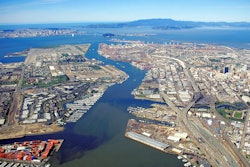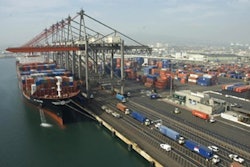The California Air Resources Board’s At-Berth Regulation, a regulation that requires container, passenger and refrigerated-cargo ships that call at six ports in California to plug into shore power using a massive extension cord attached to an outlet at the berths, went into effect on Wednesday.
The law requires vessel operators to plug in at least half of a fleet’s ships and lower overall emissions by 50 percent. In 2017, the requirements jump to 70 percent and to 80 percent in 2020.
“You haven’t seen a program like this applied industry wide anywhere else in the world,” said John McLaurin, president of Pacific Merchant Shipping Association, which represents shippers and marine terminal operators.
Shore power, which was first developed by the Navy to allow ships to plug into electricity instead of using onboard engines, was a measure in the L.A./Long Beach clean air plan.
The need to reduce diesel particulate matter and nitrogen oxide emissions and other pollution spilling into neighborhoods adjacent to the ports motivated state officials to create the new regulation, one of several enacted over the last decade to combat pollution from the ports — a massive economic generator that moves millions of cargo containers carrying goods bound for the region and eastward.
“California’s leading the way again, and it’s part of our general goods movement where it incorporates the time the vessels come in, the type of fuel” and other factors, said David Mehl, manager of CARB’s energy section, which handles the At-Berth Regulation. “It’s a significant regulation, and when you add all of this up, the benefit to nearby communities is significant.”
To read more, click HERE.


















